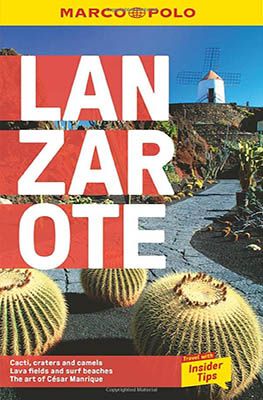For those who have always dreamed of a trip to the moon, booking a trip to the Canary Island of Lanzarote can be a great alternative. On the unique Lanzarote, the magic of the volcanoes and the landscape of lava rocks go hand in hand. With a visit to the Timanfaya National Park, you will feel as if you have landed on the moon. Lanzarote is located off the coast of Morocco. However, when you visit the Montañas del Fuego, you will feel as if you are on another planet, light-years away from our own. It’s high time to take a closer look at the impressive landscape of Lanzarote in this blog.
In this blog ...
- Timanfaya National Park, heart of the volcanoes on Lanzarote
- Lanzarote and the legend of El Diablo
- Cliffs of lava and a green crater lake
- Wine and Volcanoes on Lanzarote: the Island’s pride
- Yaiza at the foot of the volcanoes on Lanzarote
- Caves and lava tubes of volcanoes on Lanzarote
- FAQs about visiting the volcanoes on Lanzarote
- You may also be interested in
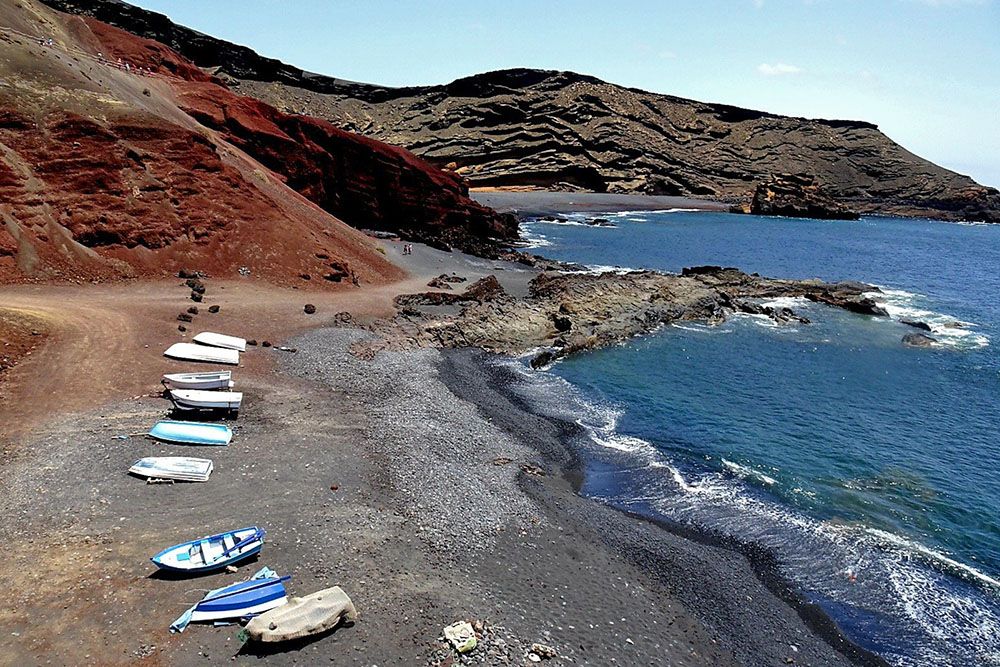
Timanfaya National Park, heart of the volcanoes on Lanzarote
In the northwest of Lanzarote, you will find the Montañas del Fuego (the Fire Mountains), which form the heart of the Timanfaya National Park. This park covers an area of over 50 km2 and is easily accessible by car or e-bike. At the park entrance, we buy a ticket. We park the car at the central parking area and then transfer to a bus for a half-hour ride. You have to take the bus because this part of the park is a protected area. On the bus, the story of the major eruptions that occurred from 1730-1736 is told in various languages. The Fire Mountains have 30 large craters and over 100 smaller volcanic cones. The highest crater is over 500 metres high.
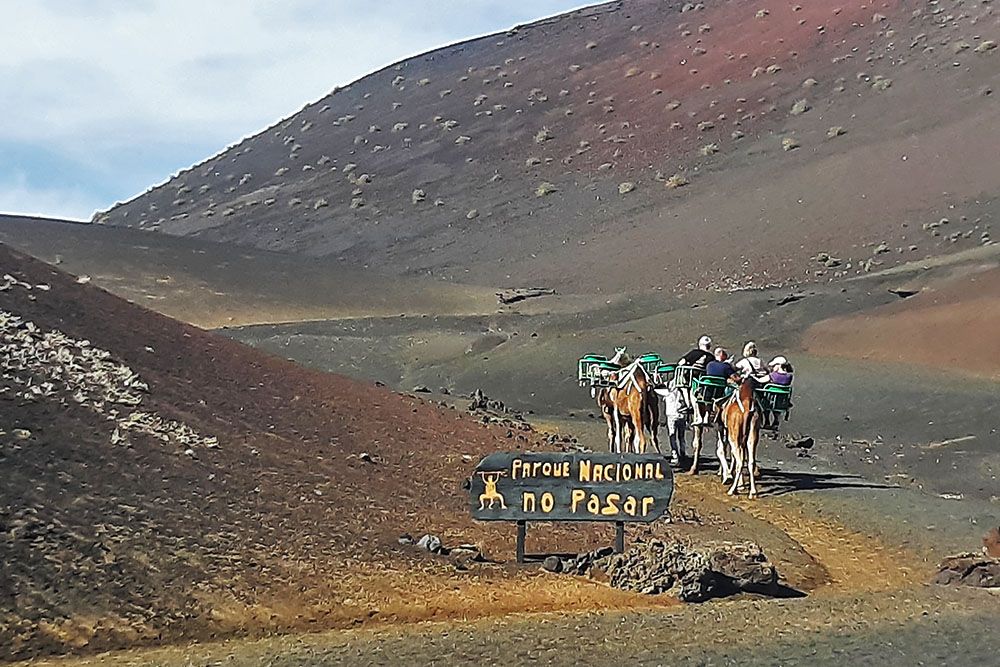
During this relentless eruption lasting six years, a total of 11 villages in the area were completely wiped off the map. The first village that was destroyed was named Timanfaya. The national park is named after this village, as well as the highest crater. Large areas of farmland were also buried under the lava. There was another eruption in 1824. After that, the craters became dormant, and the volcanoes are “sleeping.” However, there is still a lot of underground activity, and temperatures can reach up to 600 degrees.
At the end of the bus tour, the guide shows us this. A bucket of water sinks into the ground and then, after a short time, spouts up as steam. Also, a bundle of dry branches that disappear into a hole in the ground quickly catches fire. Further on, at the El Diablo restaurant, chickens are roasted on a spit using the heat from the earth. Spectacular demonstrations that show that a seemingly dormant volcano still has plenty of power beneath the surface!
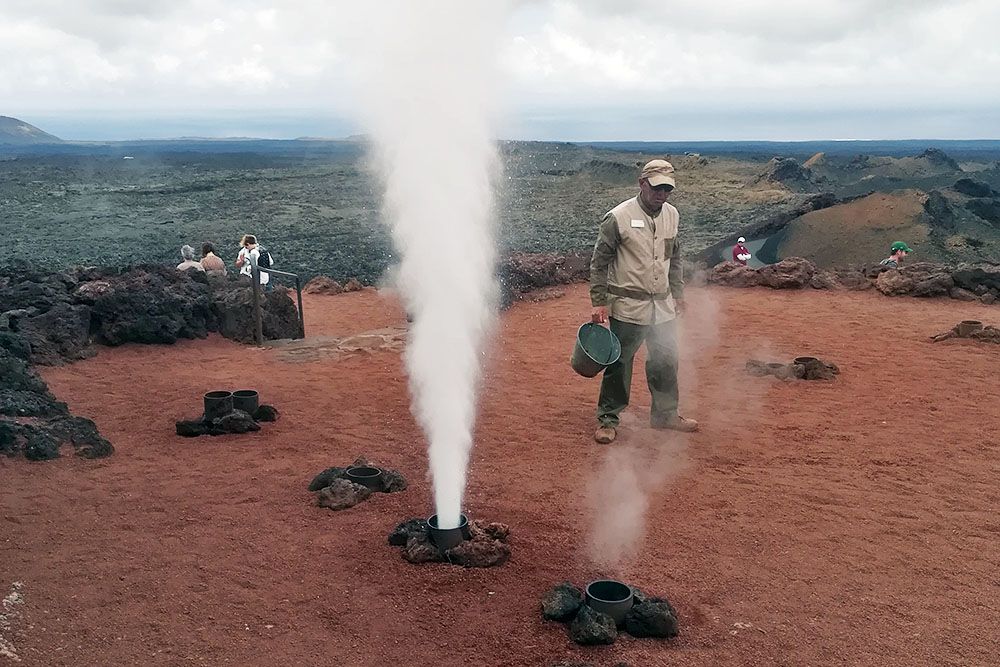
Lanzarote and the legend of El Diablo
At the park entrance, el Diablo (the devil) proudly overlooks the lava landscape. This little devil is seen throughout Lanzarote and was not chosen as a symbol by chance. The legend of the little devil is intertwined with the major volcanic eruptions from 1730 to 1736.
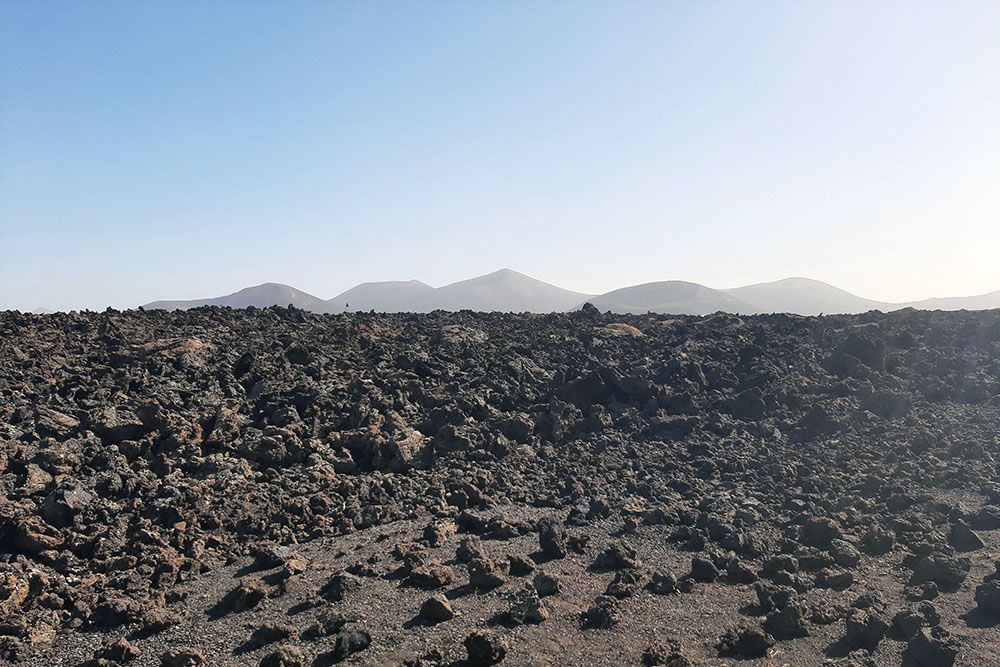
The story tells the legend of a young couple who married on September 1, 1730, in the village of Timanfaya. During the ceremony, there was a sudden massive explosion, and the volcanoes began to erupt. The wedding guests and the young couple fled from the volcano’s fury. However, the bride was buried under a large rock. This happened before the eyes of her groom.
According to the legend, he grabbed a 5-pronged fork and tried to push the rock off his beloved’s body. Unfortunately, this did not help, and his beloved died before his eyes. In a panic, the groom ran around the lava-spewing volcanoes for days. In the night, the islanders saw the groom standing on the tops of the volcano, his arms desperately above his head with the 5-pronged fork in his hands. His silhouette was illuminated by the moon. This silhouette became the eventual little devil and the symbol of Timanfaya National Park.
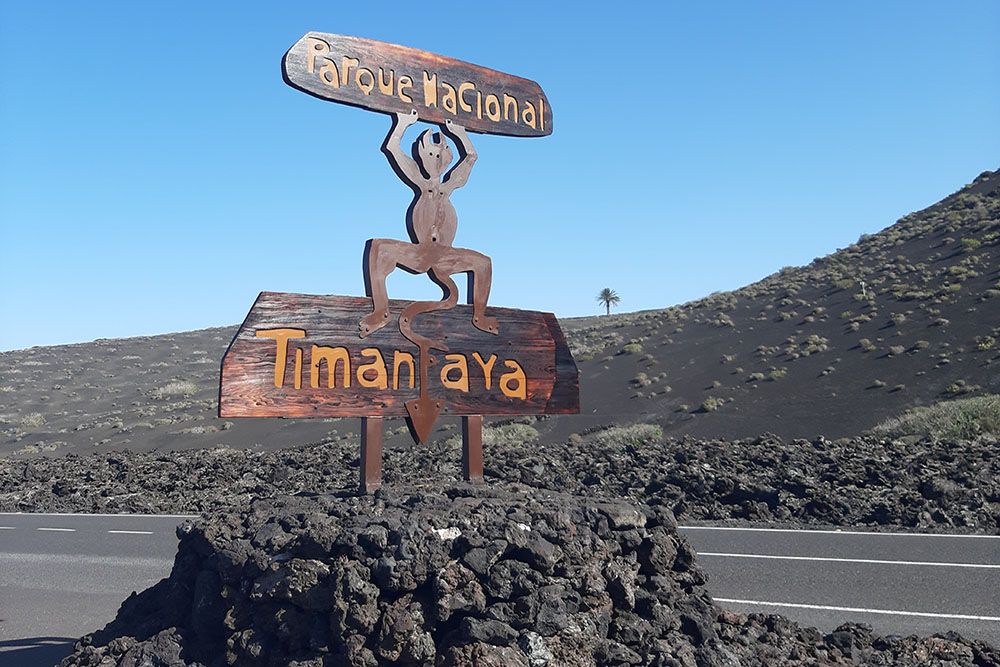
Cliffs of lava and a green crater lake
After a visit to Timanfaya, the green lake Lago Verde should not be missed. A fifteen-minute drive takes us to the village of El Golfo, a small place beautifully situated on a black beach. The wild surf of the sea crashes onto the lava rocks here. Here you will also find Lago Verde: a lake that has formed from water that remained in an old crater.
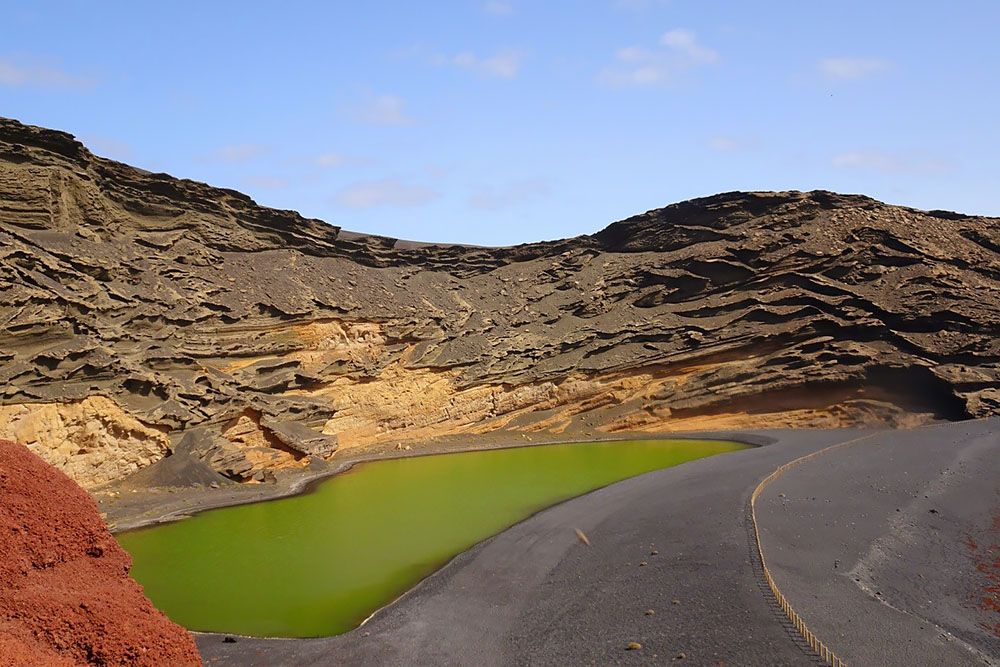
Due to the stagnant water, certain algae develop, giving the water a bright green color. The deep green of the lake stands in beautiful contrast to the black of the lava and the blue of the sea. From the green lake, you overlook the slightly lower black lava beach of El Golfo. The azure sea stands out beautifully against the black beach and the red color of the volcano walls. The small fishing boats lying on the beach complete the picture.
El Golfo is also perfect for a lunch stop. There are various restaurants serving fresh fish. The fantastic view over the lava beach and the sea comes for free. For a romantic dinner, the evening is the best time to visit. The sunset from the terrace of the Costa Azul restaurant is breathtaking!
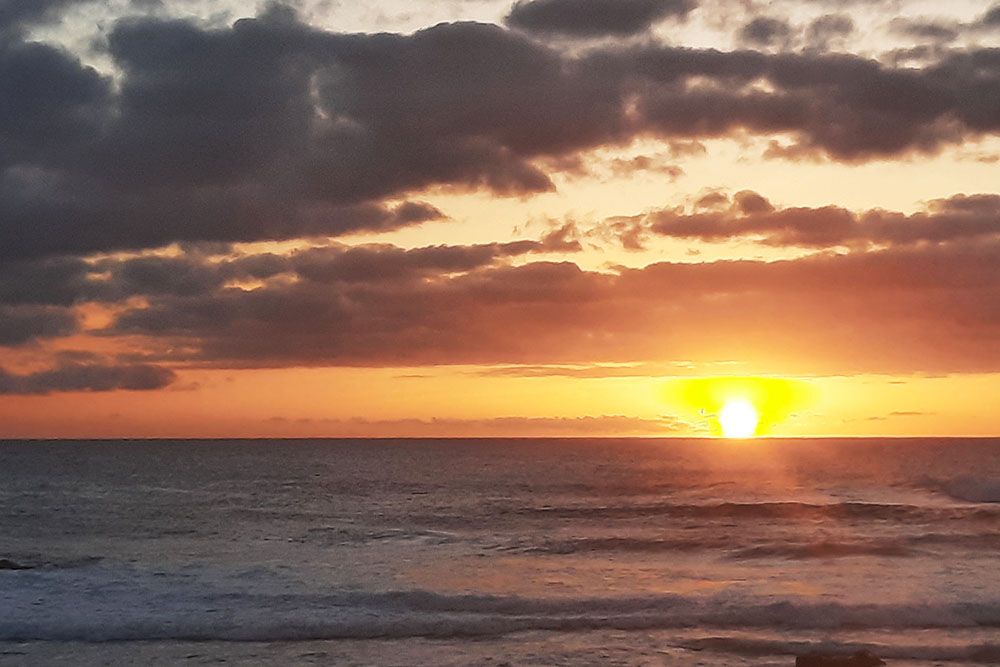
Wine and Volcanoes on Lanzarote: the Island’s pride
The wine region La Geria emerged on the outskirts of the Timanfaya National Park. After the destruction of approximately 150 km2 of fertile land by the volcanic eruption, the population had to find a different type of agriculture. The lava soil turned out to be extremely suitable for wine cultivation.
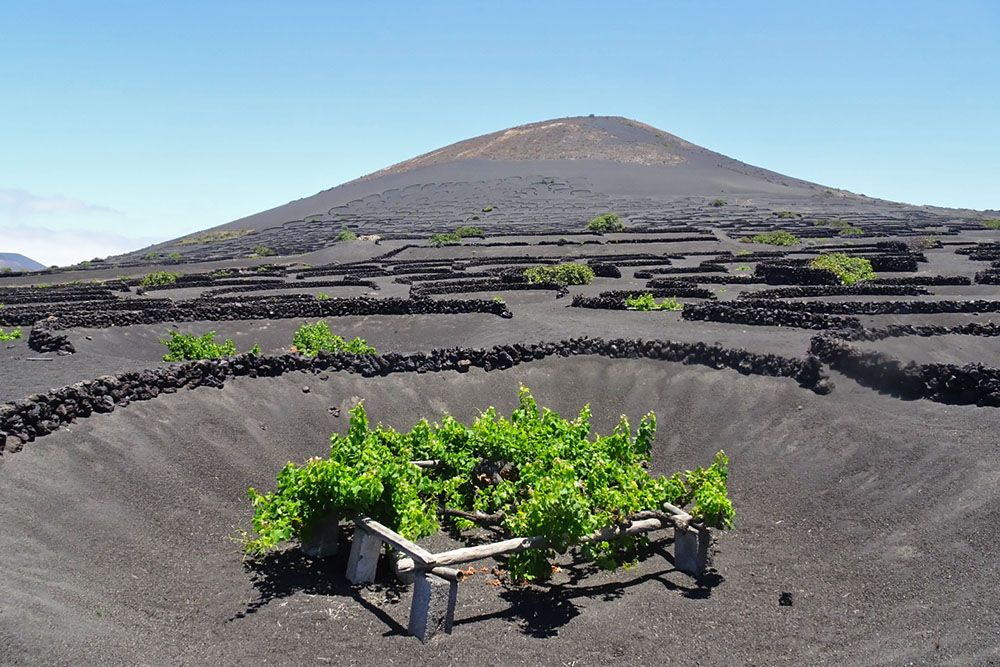
In the lava ash (picon), pits are dug in which the wine branches are planted. The little water that falls on Lanzarote is well retained by the lava stones. Circular stone walls have been built around the plants as protection from the wind. These circles are called Zoco and contribute to Lanzarote’s unique landscape. The grape that thrives on Lanzarote is the Malvasia grape. The entire cultivation process is manual, from planting the wine branches to harvesting. It is also impossible to use machinery in the lava ash.
The La Geria area has many wineries. Visiting a winery with a tasting session is possible. El Grifo is the oldest winery on the island and, according to many, the most beautiful. Bodega Stratus is also wonderful to visit and has a delightful terrace for enjoying wine and local cheese. If you want to “taste” the volcanoes in addition to seeing and experiencing them in Timanfaya, a wine tour is highly recommended.
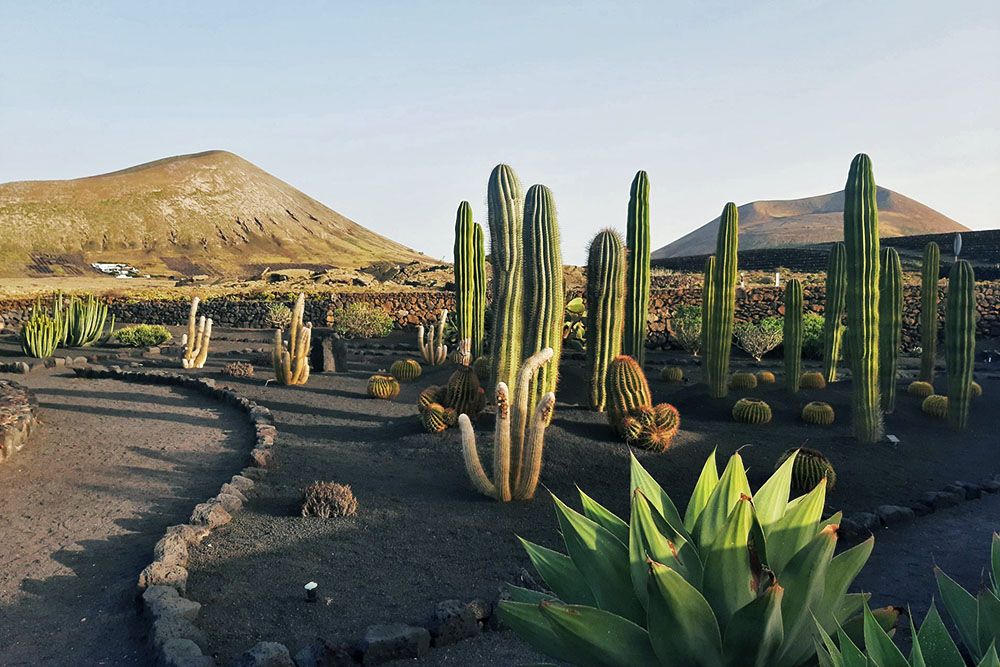
Yaiza at the foot of the volcanoes on Lanzarote
Before driving into Timanfaya National Park, you’ll find the charming village of Yaiza at the foot of the park. This small white village is well worth a visit. In the old school, in the small center of Yaiza, you’ll find several delightful artistic shops. The white facade bears the inscription “Café Antigua Escuela.” The shops offer various handmade jewelry for viewing and purchase. You’ll also find pottery, the typical tiles depicting images of Lanzarote, and a cozy spot for a cup of coffee. A great stop on the way to or from Timanfaya.
You can take a short walk through Yaiza and explore the charming village square. Or enjoy delicious tapas at a small restaurant by the street. It’s a picturesque place to escape the major tourist hotspots for a while. It’s also possible to book small-scale “off the beaten path” accommodations here.
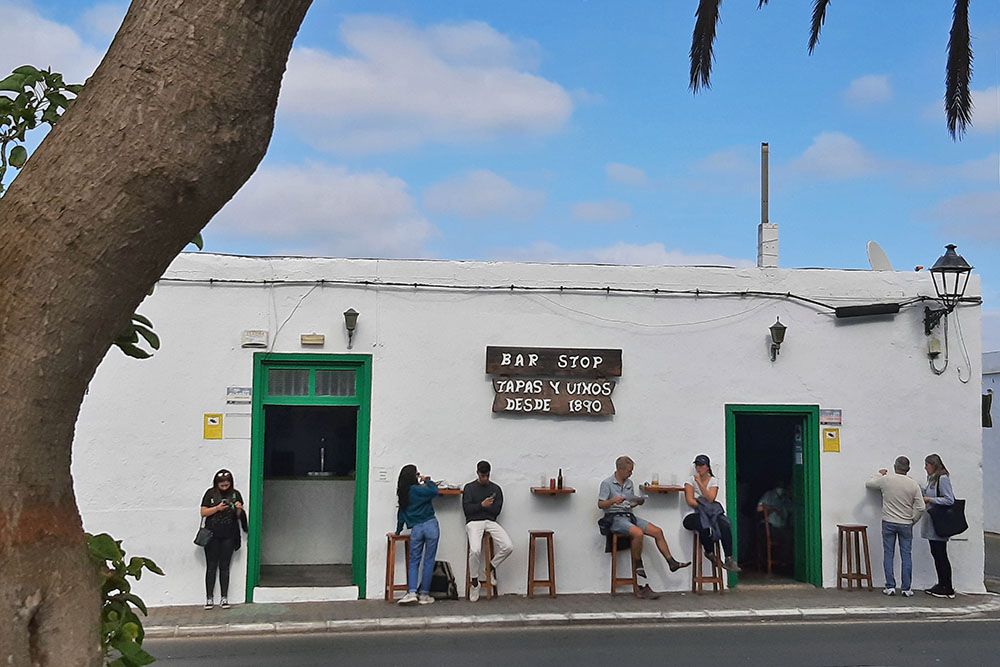
Caves and lava tubes of volcanoes on Lanzarote
It’s crystal clear that the long volcanic eruptions have drastically altered the landscape of Lanzarote. But the effects of the eruptions are not only visible on land. Underground, the volcanic eruptions have also had a significant impact, resulting in a network of caves and lava tunnels.
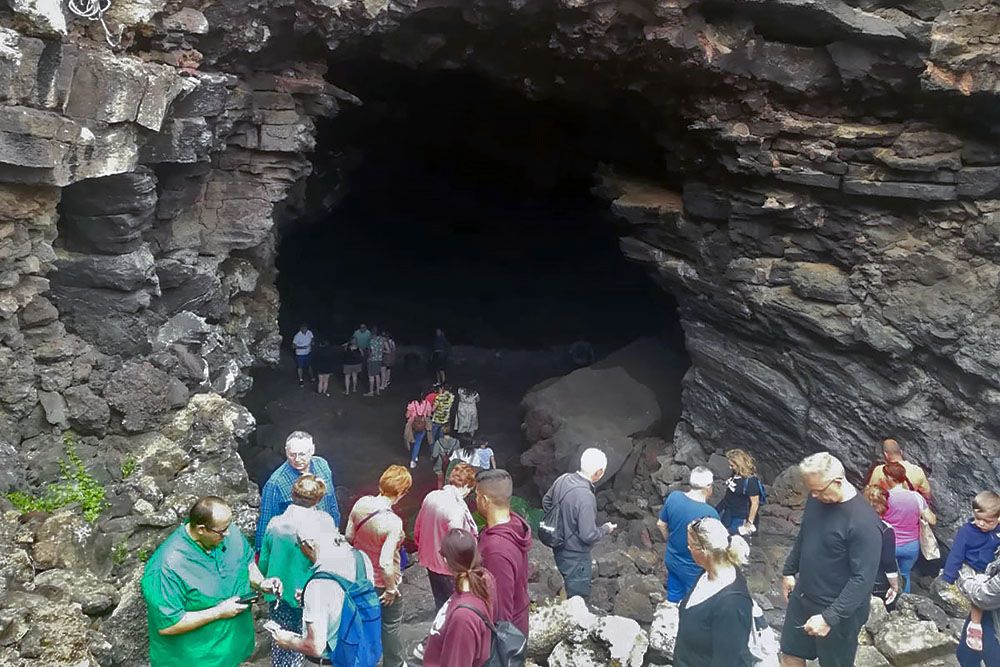
Cueva de los Verdes, in the north of the island, is a prime example of this. With its six kilometers in length, it is one of the longest lava tunnels in the world. Due to subsequent explosions, parts of the tunnel’s roof have collapsed in certain sections. This created various interconnected caves. In the 16th and 17th centuries, these caves were used as shelters against pirates and other assailants of the island. In Cueva de los Verdes, you can visit a two-kilometer section of the lava tunnel under the guidance of a guide. It’s a challenge for those with claustrophobia, as you descend into the tunnel through a small hole and a narrow staircase. The lighting, stalagmites, and stalactites are beautiful. The tunnel ends in an underground concert hall with amazing acoustics.
During the tour, you can sit here and listen to music. Actual concerts are also held in this underground concert hall. If you have tickets for a concert, make sure to arrive on time. Before reaching the concert hall, you take a walk through the tunnel for about half an hour. Upon arriving in the concert space, you’ll be rewarded with a fairytale-like experience. However, high heels are not a good idea for this evening out!
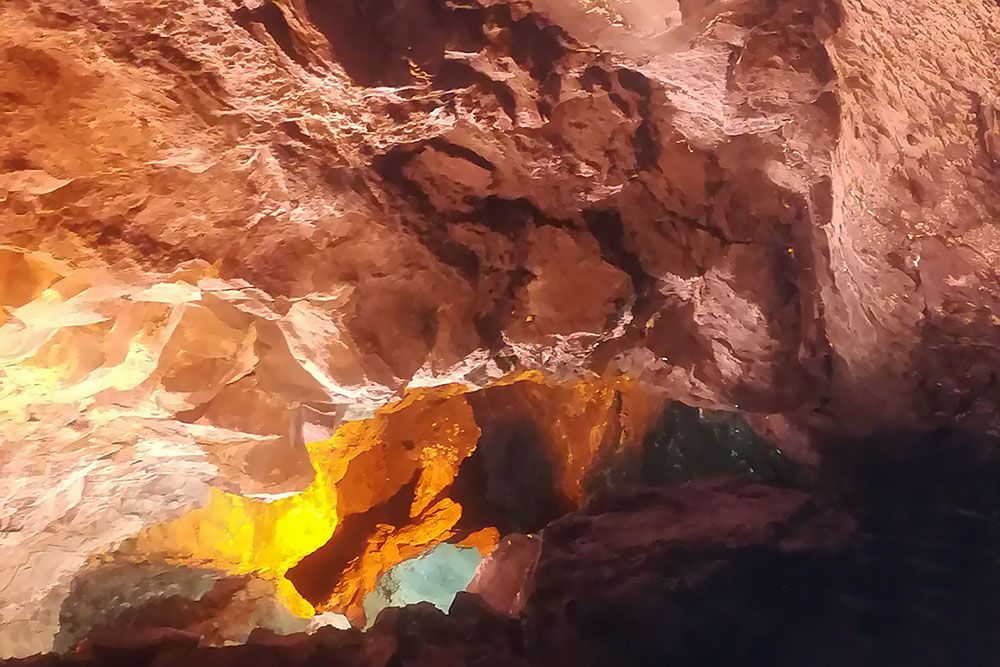
FAQs about visiting the volcanoes on Lanzarote
Lanzarote is the easternmost island of the Canary Islands, located in the Atlantic Ocean over 100 kilometers off the coast of Morocco.
Lanzarote's volcanic landscape, the low-rise white houses, and the green palm trees give the island its unique character. Along the coast, you'll find beautiful light sandy beaches and charming tourist towns. Further inland, you'll discover the spectacular volcanic landscape reminiscent of a stay on the moon. There are numerous charming towns and attractions to visit. Additionally, Lanzarote offers great opportunities for sports enthusiasts, especially in cycling, running, swimming, and surfing. The island also has two golf courses. In short, it's a versatile and unique island.
On Lanzarote, you can strike the perfect balance between relaxation and exploration. The beautiful beaches are ideal for a day of seaside relaxation. Highlights of the island include a visit to Timanfaya National Park, the heart of the volcanoes. Other highlights include a visit to the Cactus Garden, the caves of Cueva de los Verdes, and Jameos del Agua. Additionally, the green lake Lago Verde and the rugged lava coasts are spectacular. The unique wine region La Geria with its many wineries is a must-visit for wine lovers.
Exploring the island by rental car is very comfortable. Organized excursions are also available to book. There are also plenty of opportunities for sports enthusiasts on Lanzarote. The island hosts several triathlon competitions per year, with the highlight being the Ironman in May. The training conditions for swimmers, cyclists, and runners are very challenging.
Yes, Timanfaya National Park is open for visitors every day. It is advisable to go in the early morning when it is less crowded. During the high season, there may be a queue to enter the parking lot. The park is open from 9:30 am to 4:00 pm.
Car rental is readily available in Lanzarote. This can be done at the airport upon arrival or at one of the rental offices in the tourist areas. It is advisable to reserve a rental car in advance for the best price and assurance. Driving on the island is safe. The roads are in good condition, and driving is on the right side of the road. The signage is also good. The islanders drive calmly.


